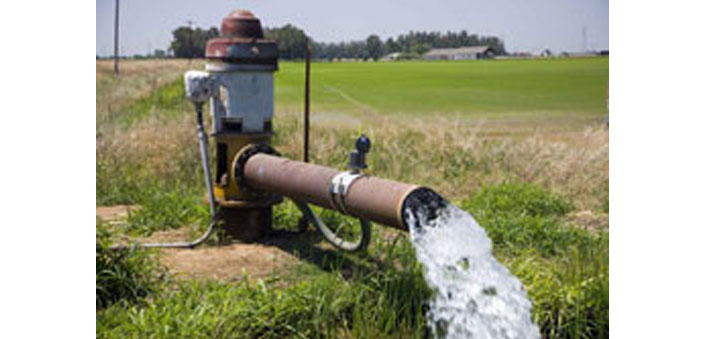Water comes in three forms usable to human life. Surface water, comprising rivers and lakes. Rainwater from the skies, and groundwater from under the earth’s surface. For most part, human civilisation has depended on surface and groundwater for its survival, and rainwater for agriculture. The three sources are therefore closely linked – rainwater is the only source of fresh (non-salty) water that is suitable for life.
Groundwater exists under the surface of the earth in reservoirs called aquifers. Made of porous rock or underground caverns these are filled by water seeping from the surface through recharge zones. The process can take a few days or a few millennia depending on the nature of the aquifer, depth, geology and quantity of rainfall. It also depends on the surface conditions – whether they are forested, hilly, barren, sandy or cemented as in cities.
In a typical situation, where the surface of the earth is forested, about 7-9 per cent of the rain that falls on the surface gets absorbed by the earth and finds its way into aquifers. Shallow aquifers are filled first, while deeper ones can take much longer and depend on the conditions at their recharge zones. Therefore, a deep aquifer may have a recharge zone that is several kilometres away in a hill range or other geological structure. Hydro-geological mapping can help determine this.
The rest of the rain runs off into rivers or evaporates. Unless augmented by watershed treatment, most rainwater is lost to the sea. It is not wasted as it goes to support life in rivers and lakes en route the ocean. However, it’s not available for human use.
Depleting water, contaminated water
India faces a water emergency now of enormous proportions. In the north especially, studies have indicated the disappearance of groundwater worth 116 cubic kilometres in the past decade. That means Rajasthan, Haryana, Punjab, Uttar Pradesh and parts of Madhya Pradesh have overdrawn groundwater by this amount. More than 80 per cent of this would have gone to farming with domestic use, industry and energy using the other 20 per cent. If that sounds trifling, consider this: that is enough water to cover the entire state of Chattisgarh with water one metre deep.
The disappearance means there is a water imbalance in these states; they are pumping out more than what is going in. This has implications for the short and medium-term water security. In the short term, wells will dry up and the shallow hand pumps installed as political sops will start failing, as aquifers start getting deeper. In the medium term, deeper wells that are now used mostly for drinking will start going dry. This means drinking water will get that much harder to reach. In the long term, once the Himalayan glaciers have melted, water will become scarce. This will be exacerbated by the inadequate and insufficient rains.
Along with the shortage of quantity, quality of groundwater has been rapidly degrading. In many parts of the country, groundwater comes laced with fluoride bearing chemicals. In many other parts, the water is too salty to be consumed, or has fluoride. In both cases, treatment is needed before being distributed for drinking.
Chemical contaminants are lethal. Both arsenic and fluoride affect the human body in different way but ultimately lead to death. Both are naturally occurring elements that leach into groundwater and then are pumped up for human resource. The issue has become more severe as groundwater is being tapped from greater depths. This water that has travelled greater distances below the earth and is often called fossil water as it has spent centuries below ground and has had a long time to dissolve minerals that make it toxic.
Modern agriculture, industry and urbanisation are three major sources of man-made pollution. Agriculture uses pesticides and fertilisers usually in excess of what is needed. The water used for irrigation percolates back into the ground while some runs off into rivers and lakes. In both cases it contaminates the groundwater with pesticides and fertilisers. These are harmful to human health. One of the manifestations of this is in Punjab where in several districts the groundwater is so severely damaged, it is unfit for drinking. In Bhatinda, water for municipal supply is treated with reverse osmosis before being supplied, as cancer rates in the town and district have shot up largely because of contaminated groundwater.
Industrial pollution has severely contaminated groundwater in several areas. Under the water pollution act, industries are required to install pollution control equipment to bring the bio-chemical oxygen demand, a measure of pollution, below stipulated norms. This is an expensive process and industries mostly get away by bribing pollution control officials and injecting toxic waste into the ground to escape detection. The second activity has turned groundwater toxic in several parts of India such as along the Hindon and Ramganga rivers in Uttar Pradesh, Pali district in Rajasthan, the Musi river in Hyderabad and the Yamuna in Delhi.
Urbanisation has picked up speed in India. In the last Census about 3,400 new towns were identified. Existing cities and towns have also grown rapidly and now a third of the country lives in urban areas. They cumulatively generate about 50,000 million litres of sewage every day. In an ideal situation this would be treated to river water quality before being discharged into water courses. India does not have the capacity to do so. The total sewage treatment capacity can handle about 30 per cent of this volume. Actual treatment is estimated at between 17 per cent and 22 per cent. That means about 40,000 million litres of raw sewage is discharged into rivers every day. This has polluted 75 per cent of the country’s surface water and will inevitably lead to groundwater deterioration.
The writing is on the wall
So what is the big deal? The big deal is we get 80 per cent of our drinking water from groundwater. The big deal is we drink groundwater without treatment, assuming it to be safe. The big deal is we are running out of this resource that ought to have been held in reserve, instead of being the first to be used. It is the fixed deposit of water that is being exhausted and degraded, instead of using the savings account. Fixed deposits are hard to replace when depleted.
Groundwater pollution is impossible or extremely costly to fix. Aquifers can run for hundreds of kilometres underground. Pumping out all their water is difficult and costly. Treating and injecting it back into the earth is also equally difficult and costly. But the criminal industries polluting groundwater think nothing of this, neither do the officials complicit in this activity.
We need to do the following


 [/column]
[/column]